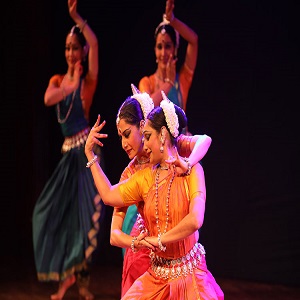The Importance of Incorporating Performing Arts in Education
 The term 'performance art' only became widely used in the 1970s, but the history of performance in the visual arts is often traced back to futurist productions and dada cabarets of the 1910s. Performing arts in higher education has since become an important part of contemporary art, with performances taking place in galleries, museums, site-specific locations, and even public spaces. Performance art is often used as a tool for social and political commentary. It can also be used to challenge traditional conceptions of art and explore new forms of expression.
The term 'performance art' only became widely used in the 1970s, but the history of performance in the visual arts is often traced back to futurist productions and dada cabarets of the 1910s. Performing arts in higher education has since become an important part of contemporary art, with performances taking place in galleries, museums, site-specific locations, and even public spaces. Performance art is often used as a tool for social and political commentary. It can also be used to challenge traditional conceptions of art and explore new forms of expression.
As the famous saying goes: “Creativity is allowing yourself to make mistakes. Art is knowing which ones to keep.” Incorporating performing arts into education enables students to gain valuable skills such as communication, collaboration, and critical thinking. These skills can help students become more creative and innovative problem solvers. Additionally, the use of performing arts can help foster a sense of community and connectedness, which can have a positive effect on student wellbeing. For instance, students can learn to collaborate by working together to choreograph a dance or create a play, which requires communication and critical thinking to bring the project to fruition. This kind of collaborative activity can reinforce the importance of teamwork, and help to create a sense of belonging and camaraderie between students. It can also foster self-confidence, as students learn to express themselves in a safe and supportive environment.It's like an orchestra coming together to produce beautiful music - each individual's unique contribution is critical and brings about something greater than any one of them could achieve on their own. The result is a harmonious, unified group that can create something special.
Provides a platform for students to express themselves
Incorporating performing arts provides a platform for students to express their ideas and feelings. Through this type of learning, students become more engaged, increase their understanding and develop their critical thinking skills. It also helps students to build connections between what they learn in the classroom and real-world applications. For instance, a student studying the American Revolution in a traditional classroom setting may apply what they have learned by participating in a reenactment of the Boston Tea Party. Similarly, a student studying the history of the Cold War could simulate a United Nations negotiation exercise and take on the role of a delegate from a particular country.
Caters to critical thinking and value education
It creates a culture of critical thinking and value education in students. This allows the student to understand the various perspectives of the different countries involved and think critically to identify potential solutions. It also teaches the student important values such as cooperation and negotiation, which are essential in the world today. This helps the student to become a responsible global citizen who can make informed decisions and take meaningful action. It also enables them to think outside the box and come up with creative solutions to the world's most pressing problems. For instance, students can be encouraged to discuss the differences in the perspectives of countries on global issues such as climate change or international trade, and to analyze the potential consequences of different outcomes. They can even be encouraged to come up with their own ideas on how to solve the world's problems, like launching a giant bubblegum-filled balloon to fix the ozone layer
Contributes to personality development
Performing arts contribute to personality development. Children can learn to think creatively and outside the box, developing critical problem-solving skills. They can also develop a greater sense of self-confidence, as they have the opportunity to express their own ideas and be heard. This can translate into better performance in the classroom, and eventually into better job opportunities. Additionally, children can learn to respect the opinions of others, as well as appreciate and value diversity. Through expressing their own ideas and having them heard, children can learn to appreciate and value diversity as well as respect others' opinions, contributing to their personal growth and development. For instance, in a classroom setting, teachers can lead activities that encourage students to share their opinions on various topics, such as the environment, politics, or current events, to foster empathy. Even if those opinions are about how much they hate a particular class.
To conclude, performing arts give students a voice and enhance their problem solving skills. It also allows them to practice their public speaking skills in a setting where they can collaborate with their peers. This, in turn, increases their confidence and helps build their team spirit. Performing arts also give students the opportunity to express their creativity and showcase their talents. Moreover, it helps develop self-confidence and creativity. It encourages students to think critically and develop a strong sense of self-expression. It also promotes discipline, focus and perseverance. Skills like these can be beneficial in many areas of their lives.

